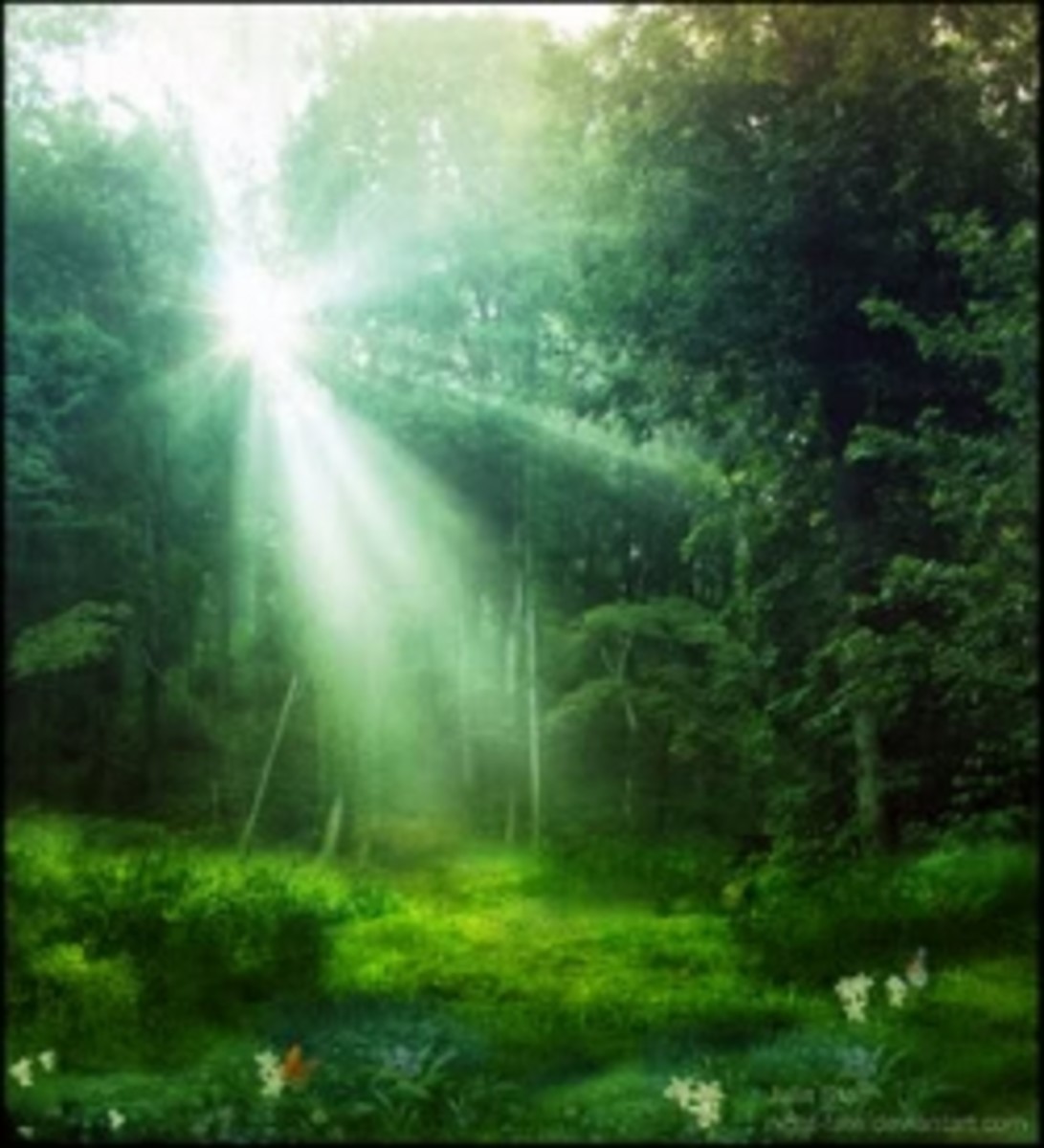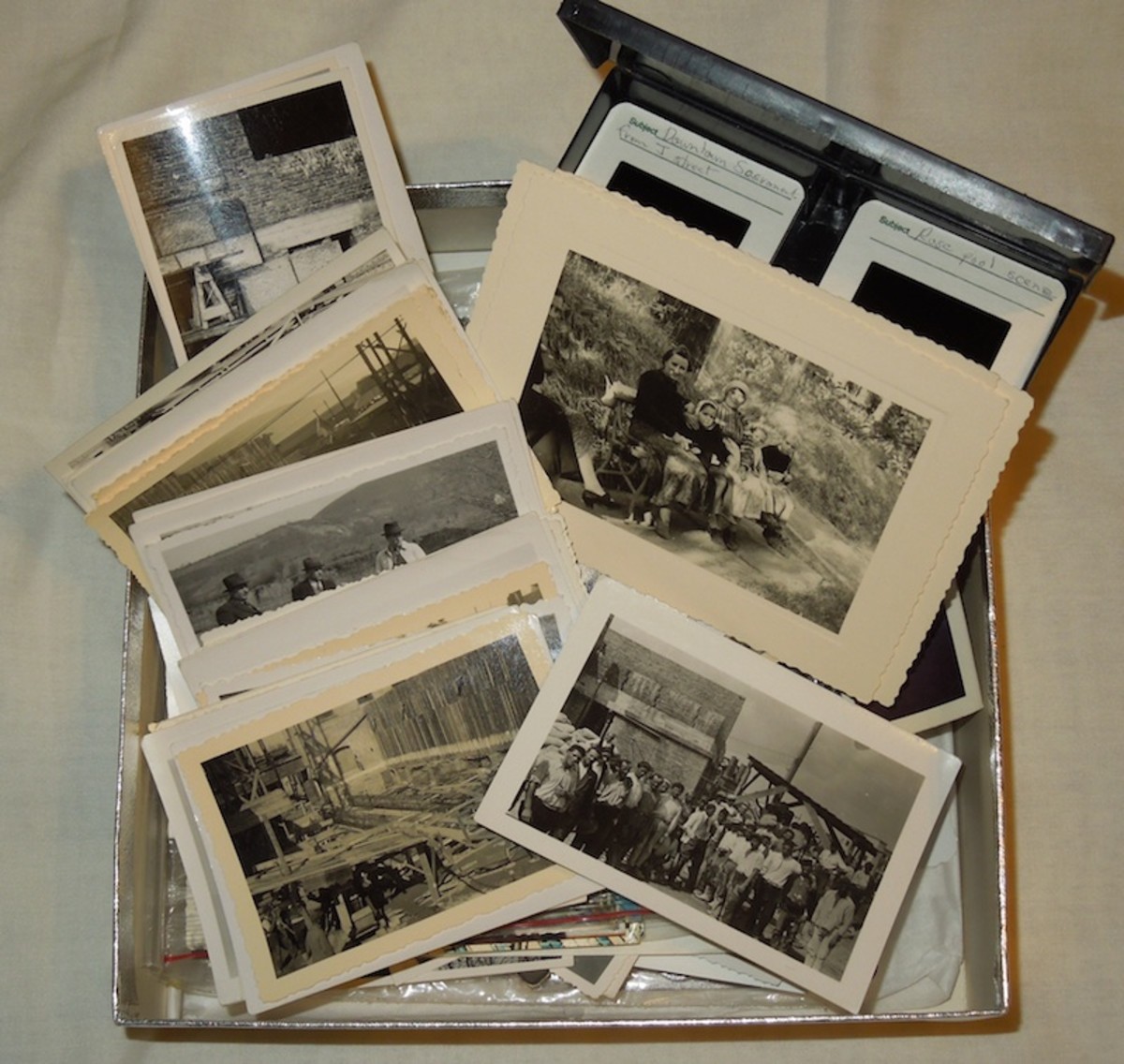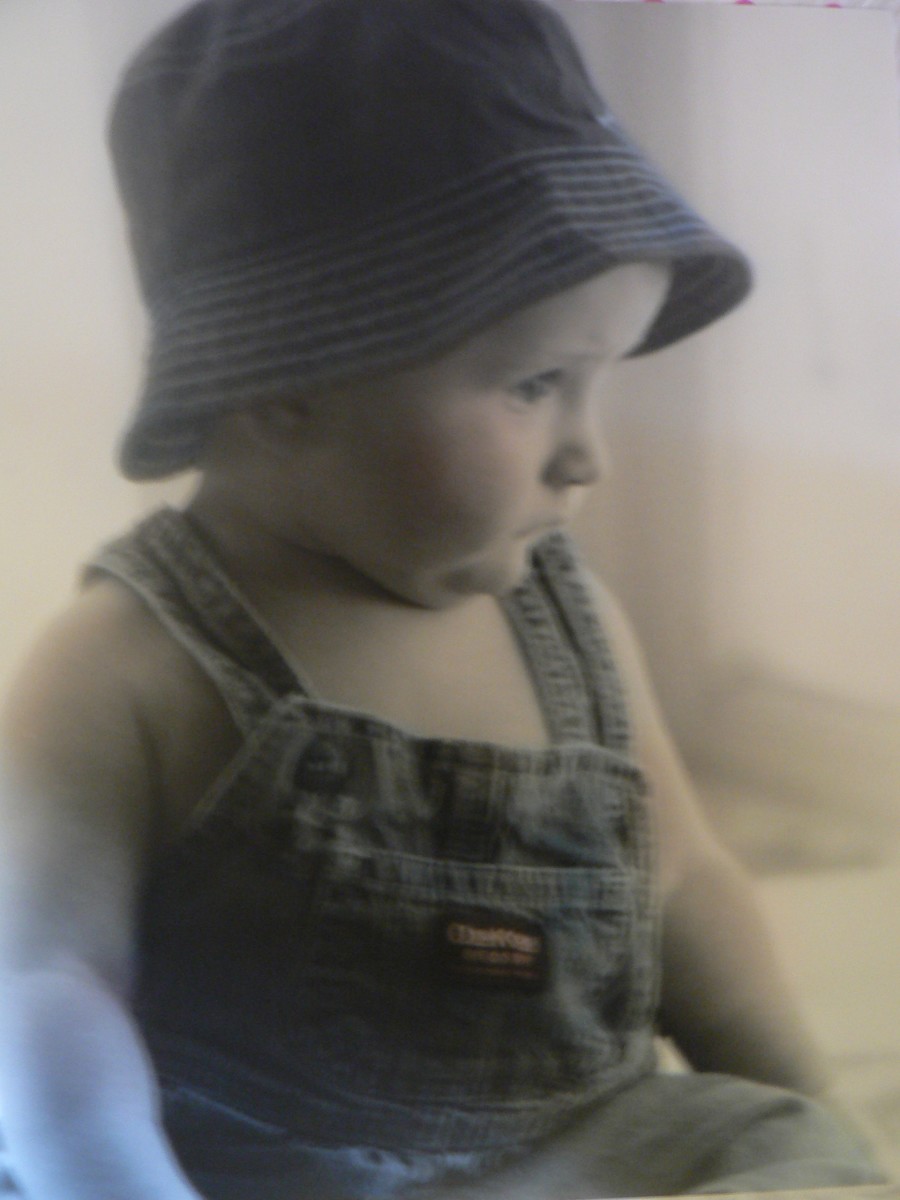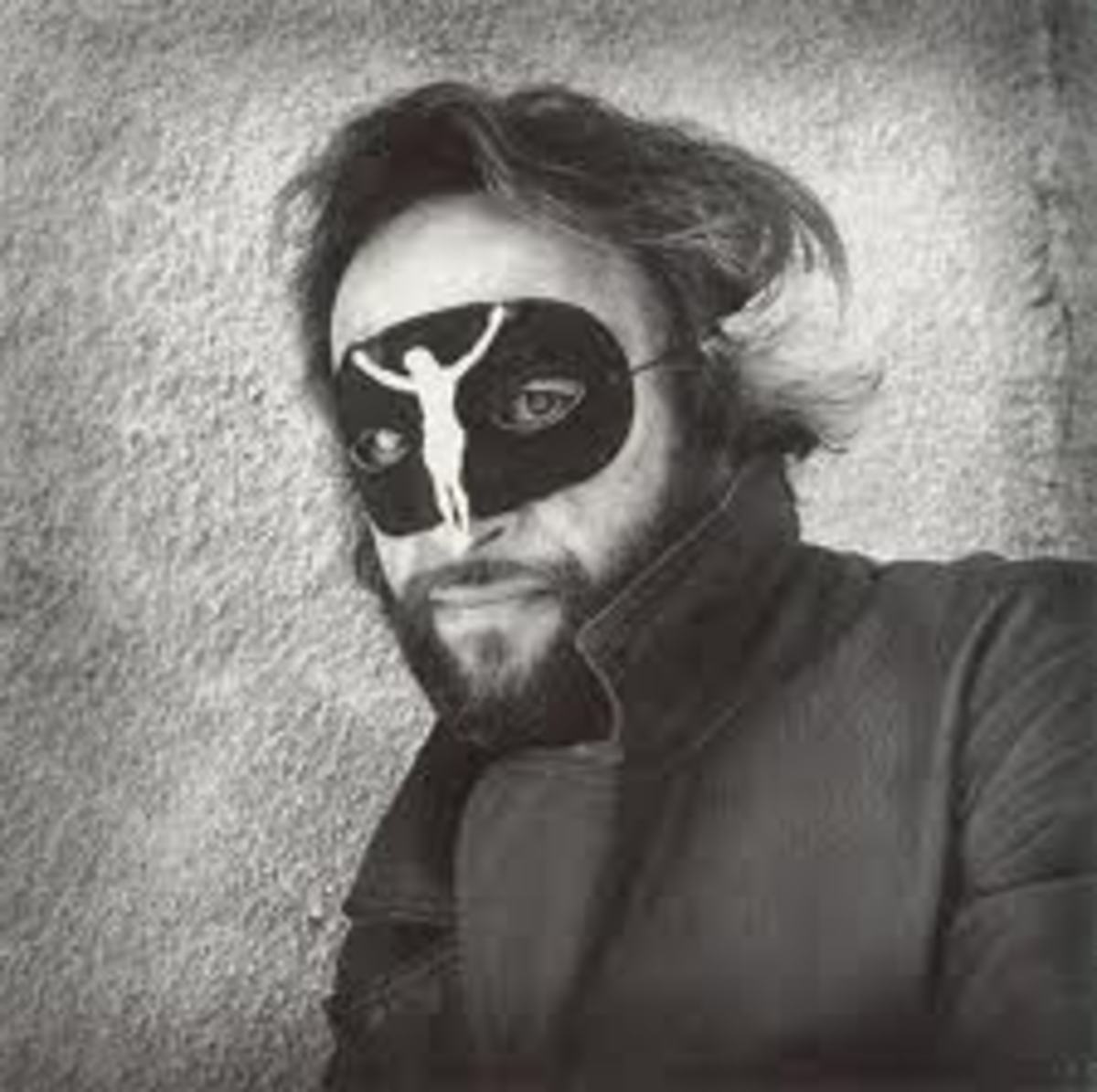Shades of Other Lives: Photographs by Gerry Atkinson
All photographs in this hub are from the book, Shades of Other Lives by Gerry Atkinson, and are the copyright of Gerry Atkinson. The book is available to buy here.
What follows is the introduction to the book written by me, and reprinted with the kind permission of the photographer and author of the book, Gerry Atkinson.
Click on the pictures to see them full-sized.
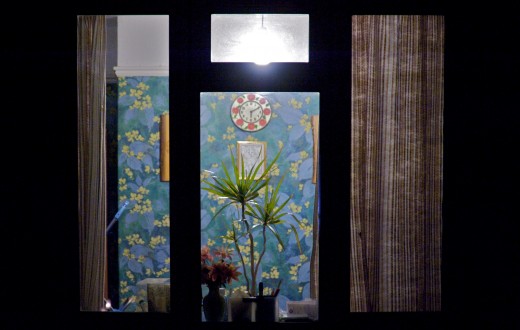
Time present and time past
Are both perhaps present in time future,
And time future contained in time past.
TS Eliot, The Four Quartets, 1943.
Time
It’s ten past six. You can see it by the clock on the wall. It must be winter because these pictures are taken after dark, when the lights are on. The curtains are half-drawn. There’s a yucca plant in the centre of the window poised like Isadora Duncan in some dramatic pose, all formality and gesture. The wallpaper consists of garish blue leaves interspersed with yellow flowers. The clock has pink flowers around the edge. There’s a black and white print on the wall. It’s hard to make out what it is. At first glance it looks like a map: an outline of the coast of America, perhaps, or a picture of Atlantis. I’d like it to be Atlantis. On closer examination, however, it seems to be a cartoon, with some words scrawled down the side.
We’re looking into someone’s room. It’s an invitation to look, an invitation to imagine. We are imagining ourselves into someone else’s life. What can we see? Is there a story here, behind this window? What kind of a life is going on? The picture is very still, very quiet. It’s a still-life behind open curtains. At other times, perhaps, people are moving back and forth through this room. Things are happening. There is the bustle of life. Perhaps the roar of a vacuum cleaner being run through the room. Perhaps the sound of the radio being played next door. Noises coming from the kitchen. The sounds of cooking in progress. Conversations going on, the clink of glasses, and the occasional bursts of laughter like waves thrown up on the shore. Not now though. Now everything is still.
They say that the eyes are the windows of the soul. Perhaps the windows are the eyes of the house. We are seeing into the soul of the house, into the what the house feels like when everything is still.
This is definitely a voyeuristic experience. If we stood outside this person’s house looking in as deeply as we do at these pictures, we would almost certainly get arrested. There’s a technical term for the crime. It’s called “Criminal Surveillance”. Criminal surveillance is the act of looking into someone else’s home for the purpose of spying on them. It also applies to a person who peeps through windows or doors. The most common term for such a person is a “Peeping Tom”.
This is what we are doing too. We are peeping in on another person’s world. We are spying on them, only in this case what we are doing is not illegal. It is allowed. Thus we can enjoy this strange opportunity at our leisure: to observe, to study, to look, to assess, to enjoy the accidental clash of objects in a frame, to absorb the scene and then move on.
This is the contradiction at the heart of these photographs. On the one hand, it feels intrusive somehow, to be looking into another person’s living space. On the other hand, there is a clear invitation contained in them as well. In The Four Quartets TS Eliot speaks of the roses that “had the look of flowers that are looked at.” That yucca plant has the look of something that is looked at too, set in the heart of the frame, lit up from behind. Whoever put it there must have liked it. Placing it in the window is like presenting it. It’s like an installation at an art exhibition or a window-display. We are being invited to look, if only in passing, if only as we walk down the street.
The difference is, of course, that when we walk down the street the window acts as a backdrop to our own passing life. We catch a glimpse of it, and then move on, forgetting it as we do. Here the image is captured, held. Photography is like a time machine. By capturing light you stop time. Here it will always be ten past six on a winter’s evening. Time is frozen, standing still in the eternal past, which is always present. The clock will never move. The door will never open. The curtains will always remain as they are, not quite open and not quite closed. The light will always be on. The inhabitants, whoever they are, will always be in the next room.
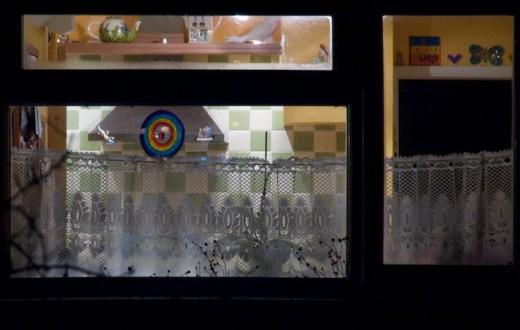
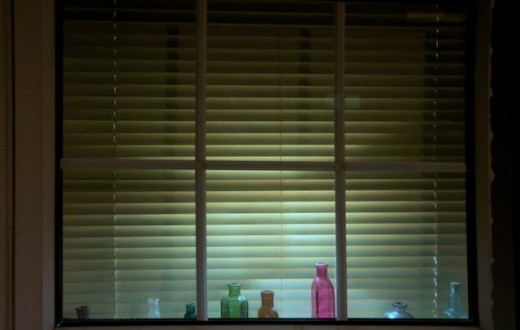
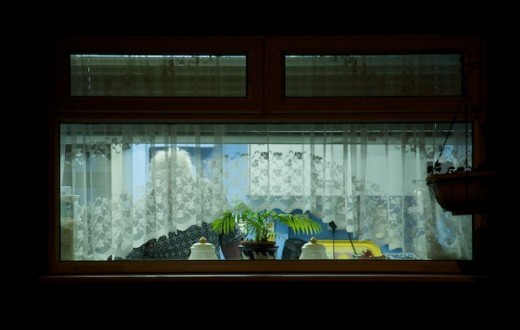
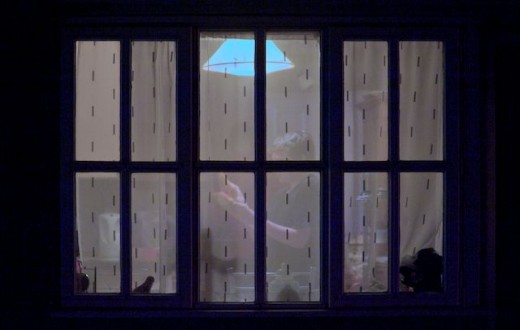
Light
Perhaps we may think of Einstein at this point. It is all about time and light. Light is the fastest thing in the universe. If we travel at the speed of light, time stops still. A photograph stops light and therefore captures time. It happens in an instant, in less time than it takes to snap your fingers. Perhaps that’s why they call it a snap. It snares the light that is flying off the object at 186,000 miles per second, trapping it in a digital box, holding it forever. It is a passing moment in the fleeting theatre of existence, like a slice of light, one atom thick. And here it is, this photograph: this most delicate of objects, a wisp of light, finer than a butterfly’s wing.
That is what strikes you about these photographs first: light. It is their luminosity. They are like light-sculptures in a glass box, or objects in a museum cabinet, illuminated for display. There is an inner radiance to them. They glow. It’s like being at the theatre or the cinema. We are with the photographer, standing in the darkness, looking into the frame of the picture, which is a glimpse into someone else’s world, lit up from the inside.
We are reminded of Edward Hopper: looking into a scene of neon loneliness from the outside. Occasionally there are people in the photographs. Figures come and go across the screen of the page, an old woman here, a shadow there, an arm thrown over the arm of a chair. Is that the back of someone’s head? Usually they are alone at home watching TV. You can see the glow of the TV about the room, that blue tinge. The light flickers about their faces, blank and passive, lost in the drama of other people’s fictional lives, watching while we watch, viewing while we view. The sense you always get from Hopper’s paintings is that there is something autobiographical in the looking. The atmosphere is internal. We are looking less at the outside of people’s lives, than at the inside, into the great distances that divide them even when they are sitting in the same room.
There is something of that in these pictures too, not so much the isolation, as what John Updike referred to as “the silence of still looking”. Somehow we are looking inside the people as we are looking inside their rooms, at the inner landscape of their lives. We are less interested in the sociology of these pictures, than in the stories they tell. There’s no beginning to them, and no end, no resolution, and no answers. It is the mystery of them that appeals, the unfathomable drift of the imagination through a framed space, not knowing what is going on inside. We have no need to label them with pre-existing stereotypes. Why give them a name? We don’t know their names. Should we knock on their door and ask: “excuse me, what is your name?” What do you think their answer would be?
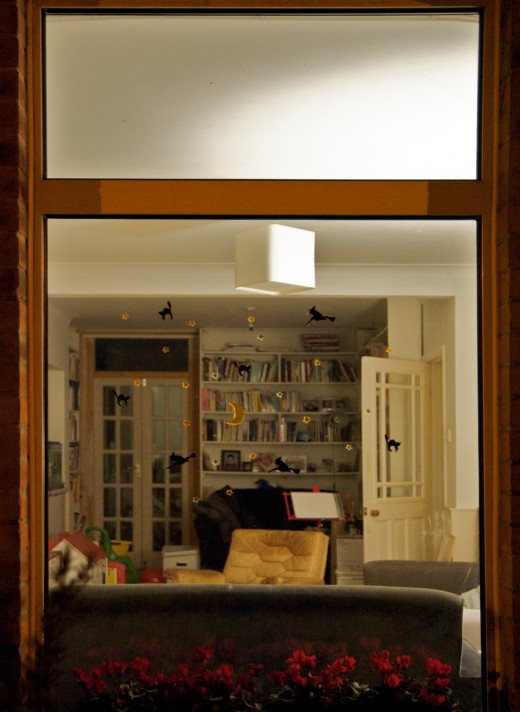
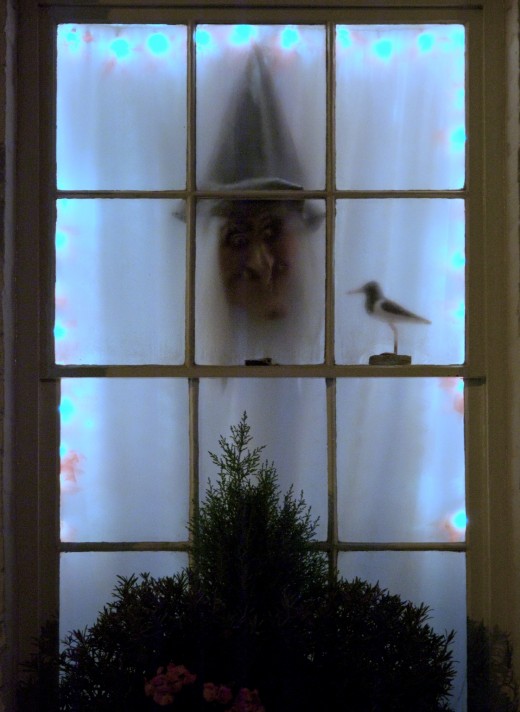
Halloween
No, it’s more interesting not to know. So this one here shows that it is a family with children. There are toys piled up in the corner by the door. There’s a toy house and a plastic dinosaur. It is Halloween. You can tell that by the mobile hanging in the window. Put in that bald way, it says nothing. But now look. Listen. You can hear the children playing in this picture. You can hear their shouts of joy. Even though the children aren’t there, on another level they are there. They are in the other room, perhaps. They inhabit the picture as much as the toys. And even after the children grow up and have children of their own, this picture will live on, with those playful shouts of joy still echoing in the other room on that Halloween night so long ago.
Little objects sit on the sill, or on the frame, which tell you about the people inside: a bird or a bottle, a pinecone or a jar of jam. There is a whimsicality in some of the objects which stand out as silhouettes against the backdrop of the curtain. A bird and two dried starfish. What does that mean? It doesn’t mean anything at all.
I keep thinking of the word “theatre”. We see a framed space with curtains. Sometimes the curtains are open, sometimes they are closed. When they are open it is like an invitation to look inside. Inside, beyond the frame, is the “set”: the room where the action takes place. But this is still-theatre. It never moves. There is no action. It’s like still-shots from a play that will never be written, in a theatre that has yet to be built, in a town that has long ceased to exist.
It is unconscious theatre. Theatre of the Unconscious. No one is posing. No one is acting. No one knows they are being watched. Sometimes the curtains are drawn and all we see are shadows of forms: indistinct shapes that might be pot plants, or a spherical lampshade that might be the moon, or, in one case, the ghostly face of a witch which is part of a Halloween display. This is like a graphic illustration of the unconscious at work. It’s like that moment on waking with a dream still fresh in your mind. As you wake up, so the dream begins to fade. The curtains are being drawn, till all you have left is indistinct forms and a sense that something important was going on. You’ve forgotten what it is, that’s all. The curtains are closed on that particular room.
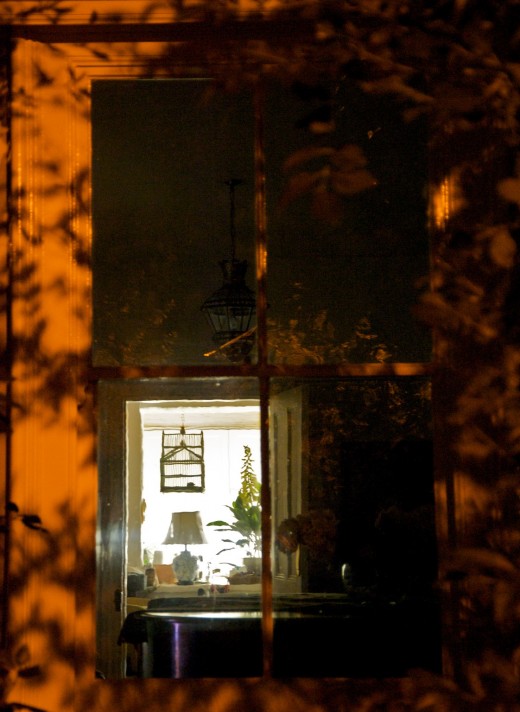
The Shadow
In Hans Christian Anderson’s grown-up fairy story, The Shadow, a studious young man is leading a lonely life in a foreign country. In the evening he sits on his balcony gazing wonderingly into the house opposite. It is dark, but a door is ajar, and from deep inside he can hear music. One night he awakens from a dream in which he spies a beautiful woman in the house. He leaps from his bed to look, but the dazzling light of his dream has faded, and there is only darkness. Then, one evening, as he is sitting on his balcony with the light from his room streaming from behind and casting his shadow across the balcony opposite, he wishes that he could send his shadow into the other room, to see what is in there, and perhaps to catch a glimpse of the beautiful woman he had seen in his dream. He gets up to go back into his room, but his shadow fulfils his wish. It enters the room on the other side of the street, and takes up residence there. Many years later, the shadow returns, having become a man.
This is a metaphor, of course, but it might describe what we do when we look into these pictures. We send a little bit of ourselves in there, to look around.
In one of my favourites we see the patchwork of shadows thrown orange on a wall, and the dark frame of the window, looking into a darkened room. But beyond that is a door, leading to another room, and that one is full of light. The room of light stands out from the shadows in front, piercingly luminous, calling you in. Perhaps we would like to send our shadow in there. Perhaps, like Hans Anderson’s story, our shadow will return with a life of its own. Or perhaps not. There’s a bird cage hanging in the other room. Maybe if we send our shadow in there it will be trapped like a bird in that cage, never to be released.
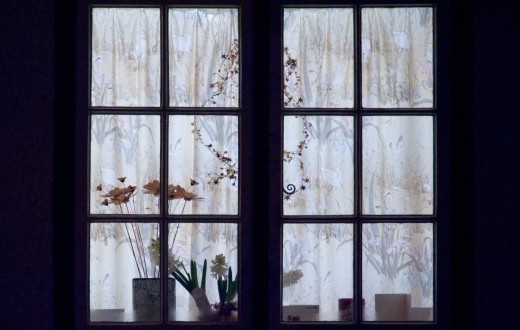
Another of my favourites shows the frame very black against the background of light. The curtains are closed, and the objects appear on our side of the curtains as silhouettes against the light. There’s a dried flower display in a square pot, a pot plant in full bloom, and the shadows of what might be some Christmas cards or birthday cards. And then in the middle of the window, a loose filigree of plastic stars like a strand of ivy hanging from the frame, and beneath that the curl of a handle. It’s hard to say why I like it so much. It’s that little curl in the middle, a whimsical architectural detail like a flourish, bold and yet simple and somehow deeply satisfying.
The more you look at these pictures, the more there is to admire. It is such a simple idea, I’m surprised no one has thought of it before. That’s what makes it art: a simplicity of form which allows for depth. And there is depth here. We are looking deeply into things. Into rooms. Into lives. Into colours. Into interiors. Into shadows. Into shapes. Into scenes. Into light. Into stillness. Into quiet.

© 2011 Christopher James Stone

